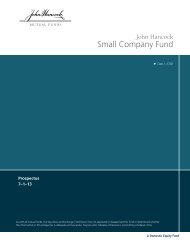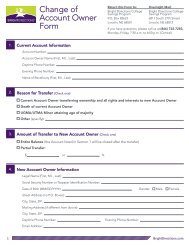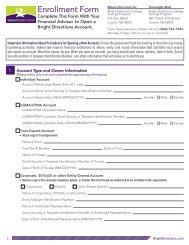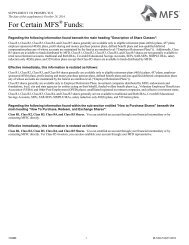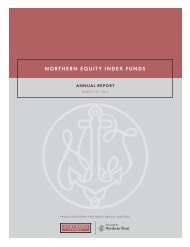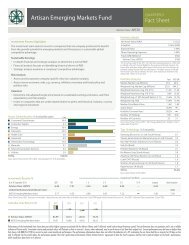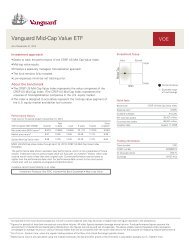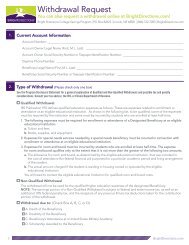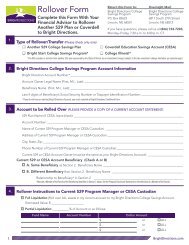Dodge & Cox Funds Statutoary Prospectus dated May 1, 2013
Dodge & Cox Funds Statutoary Prospectus dated May 1, 2013
Dodge & Cox Funds Statutoary Prospectus dated May 1, 2013
You also want an ePaper? Increase the reach of your titles
YUMPU automatically turns print PDFs into web optimized ePapers that Google loves.
DODGE & COX STOCK FUNDINVESTMENT OBJECTIVESThe Fund seeks long-term growth of principal andincome. A secondary objective is to achieve a reasonablecurrent income.FEES AND EXPENSESThis table describes the fees and expenses that you maypay if you buy and hold shares of the Fund.SHAREHOLDER FEES(fees paid directly from your investment)Sales charge (load) imposed on purchasesDeferred sales charge (load)Sales charge (load) imposed onreinvested distributionsRedemption feeExchange feeANNUAL FUND OPERATING EXPENSES(expenses that you pay each year as a percentage of the value ofyour investment)NoneNoneNoneNoneNoneManagement fees .50%Distribution and/or service (12b-1) feesNoneOther expenses (transfer agent, custody,accounting, legal, etc.) .02%Total Annual Fund Operating Expenses .52%Example: This example is intended to help you comparethe cost of investing in the Fund with the cost ofinvesting in other mutual funds.The example assumes that:▪ You invest $10,000 in the Fund for the time periodsindicated and then redeem all of your shares at the endof those time periods;▪ Your investment has a 5% return each year; and▪ The Fund’s operating expenses remain the same.Although your actual costs may be higher or lower,under these assumptions your costs would be:1 Year 3 Years 5 Years 10 Years$53 $167 $291 $653PORTFOLIO TURNOVERThe Fund pays transaction costs, such as commissions,when it buys and sells securities (or “turns over” itsportfolio). A higher portfolio turnover rate may indicatehigher transaction costs and may result in higher taxeswhen Fund shares are held in a taxable account. Thesetransaction costs, which are not reflected in annual Fundoperating expenses or in the example, affect the Fund’sperformance. During the most recent fiscal year, theFund’s portfolio turnover rate was 15% of the averagevalue of its portfolio.PRINCIPAL INVESTMENT STRATEGIESThe Fund invests primarily in a diversified portfolio ofcommon stocks. Under normal circumstances, the Fundwill invest at least 80% of its total assets in commonstocks, including depositary receipts evidencing ownershipof common stocks. The Fund may also purchase othertypes of securities, for example, preferred stocks, and debtsecurities which are convertible into common stock. TheFund may invest up to 20% of its total assets in U.S.dollar-denominated securities of non-U.S. issuers tradedin the United States that are not in the S&P 500.In selecting investments, the Fund invests primarilyin companies that, in <strong>Dodge</strong> & <strong>Cox</strong>’s opinion, appear tobe temporarily undervalued by the stock market but havea favorable outlook for long-term growth. The Fundfocuses on the underlying financial condition andprospects of individual companies, including futureearnings, cash flow, and dividends. Various other factors,including financial strength, economic condition,competitive advantage, quality of the business franchise,and the reputation, experience, and competence of acompany’s management are weighed against valuation inselecting individual securities. The Fund invests primarilyin medium-to-large well established companies based onstandards of the applicable market.PRINCIPAL RISKS OF INVESTINGYou could lose money by investing in the Fund, and theFund could underperform other investments. Youshould expect the Fund’s share price and total return tofluctuate within a wide range. The Fund’s performancecould be hurt by:D ODGE & C OX F UNDS ▪ PAGE 1




